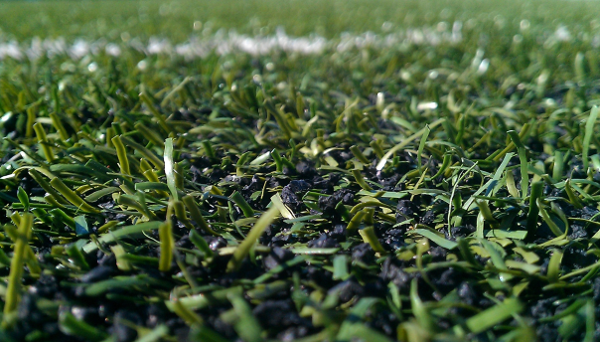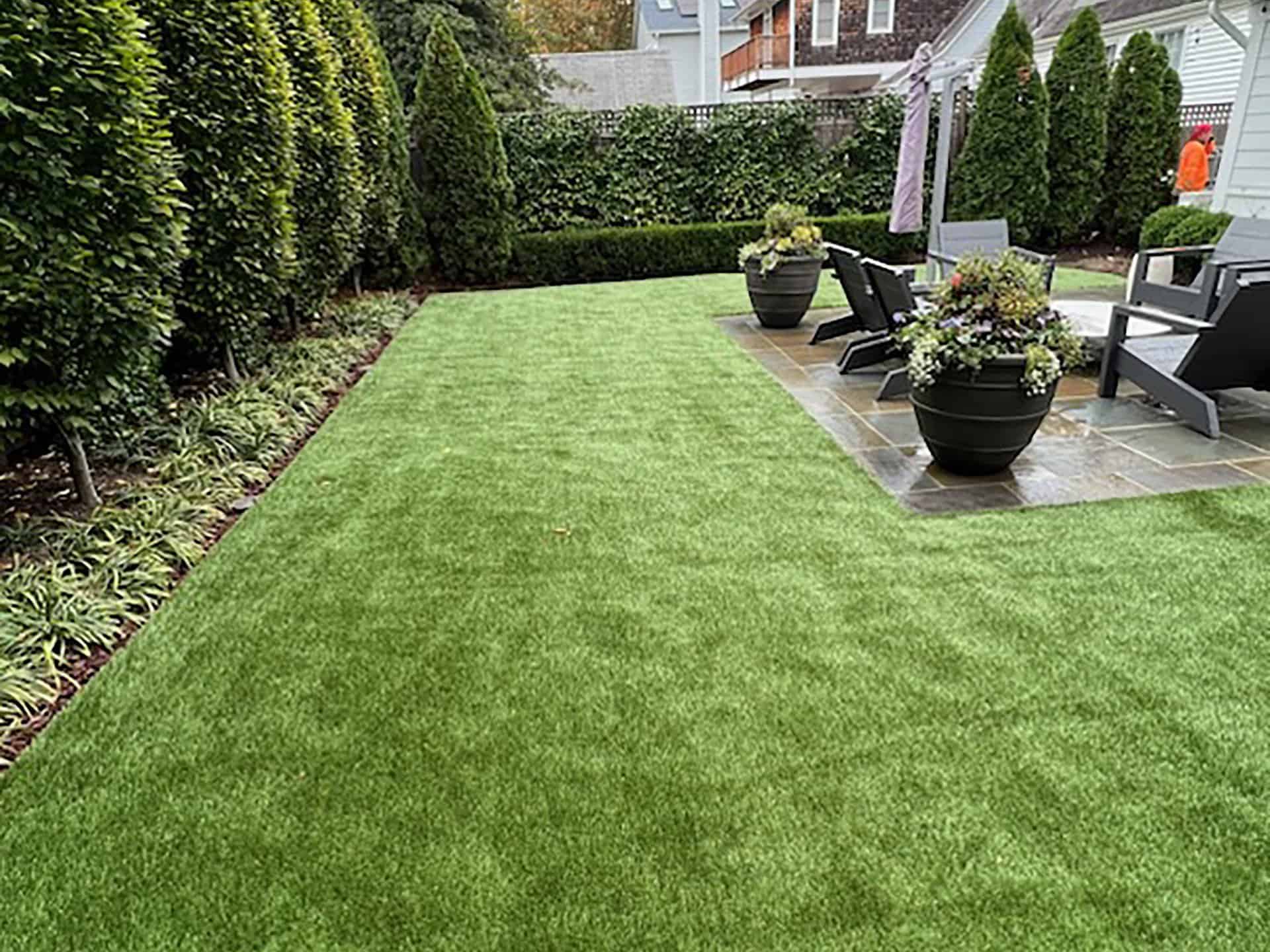Explore the Environmental Conveniences of Opting for Artificial Grass Solutions
The adoption of synthetic grass remedies presents an engaging chance to deal with pressing environmental challenges. By significantly lowering water usage and reducing the application of hazardous chemicals, these alternatives not just promote lasting landscape design however likewise shield neighborhood environments. In addition, the reduced carbon footprint related to lowered maintenance activities adds to an extra sustainable technique to land monitoring. The ramifications of these benefits prolong past simple conservation efforts, elevating inquiries regarding their long-lasting influence on environment preservation and total environmental equilibrium. Checking out these measurements reveals a complex interaction worth thinking about.
Water Preservation Perks
One of the most substantial benefits of artificial turf is its capacity to preserve water. In contrast, synthetic turf does not require watering, significantly lowering the general demand for water sources.
By eliminating the demand for routine watering, artificial lawn adds to sustainable landscape practices and assists mitigate the ecological impact of excessive water consumption. The conservation of water extends to the decrease of drainage, which can lead to dirt erosion and waterway air pollution.
In addition, the installment of man-made lawn enables house owners and districts to designate water resources more effectively, concentrating on important usages such as alcohol consumption water and agriculture. The shift in the direction of synthetic grass not only promotes accountable water usage however additionally aligns with more comprehensive environmental objectives targeted at maintaining natural deposits.
As areas increasingly focus on sustainability, the water conservation benefits of synthetic turf present an engaging case for its fostering in industrial and household landscape design tasks.
Reduced Chemical Use
The transition to synthetic grass considerably decreases the reliance on chemical therapies generally used in all-natural turf maintenance. Standard grass monitoring commonly involves the application of herbicides, chemicals, and plant foods to advertise development and control parasites. These chemicals can pose dangers to human wellness, neighborhood wildlife, and the environment, contributing to dirt and water contamination.
In contrast, fabricated grass gets rid of the demand for these damaging materials. By lessening the release of synthetic compounds right into the environment, synthetic turf promotes healthier dirt and water systems.
Moreover, the lack of chemical overflow connected with synthetic grass installments aids safeguard neighborhood waterways from pollution, sustaining aquatic life and maintaining biodiversity. Phoenix turf companies. As areas increasingly focus on lasting methods, opting for man-made lawn offers a feasible service that aligns with ecological conservation objectives. Via this change, homeowner can enjoy rich eco-friendly areas without endangering environmental health and wellness, leading the way for a much more lasting future
Reduced Carbon Footprint

In addition, the installation of synthetic grass can cause substantial water preservation. All-natural lawns require significant quantities of water for irrigation, which not just contributes to the carbon footprint related to water removal click site and treatment but additionally stress regional water sources. On the other hand, fabricated grass needs minimal upkeep, needing no watering, thus considerably decreasing water use and its linked energy costs.
Additionally, the longevity of synthetic grass adds to its reduced carbon impact. With a life expectancy of up to 15 years or more, the requirement for constant substitutes is reduced, causing much less waste and reduced power consumption in production and disposing of conventional grass options. In general, man-made lawn presents a sustainable alternative for environmentally conscious landscaping.
Habitat Preservation
Environment conservation is a crucial factor to consider in the dispute over landscape design options, particularly when contrasting fabricated turf to all-natural lawn. Natural turf lawns often call for substantial maintenance, consisting of the usage of pesticides, herbicides, and plant foods, which can detrimentally influence neighborhood environments. These chemicals can seep right into the dirt and rivers, harming native plants and fauna and interrupting regional habitats.
Fabricated grass eliminates the requirement for dangerous chemicals, consequently securing nearby wild animals and maintaining the honesty of surrounding environments. The setup of fabricated turf can lead to the conversion of former lawn locations right into even more biodiverse landscapes, such as pollinator gardens or native plant areas, which can support regional wildlife.
Eventually, the shift to synthetic grass not just conserves water and decreases maintenance efforts but likewise promotes a much more unified partnership between human activities and the native environment, promoting environment conservation while doing so.
Long-Term Sustainability
Lasting sustainability is a crucial element in assessing the advantages of synthetic turf over traditional grass yards. One of the most considerable benefits of synthetic grass is its toughness; it can last as much as 15-20 years with minimal maintenance, whereas natural lawn needs frequent reseeding and substitute. This long life decreases the need for consistent resources, such as water, plant foods, and pesticides, which are important for keeping a healthy grass yard.
Furthermore, fabricated grass adds to a reduction in carbon emissions related to yard care tools. Typical yards typically require gas-powered lawn mowers, leaners, and blowers, every one of which contribute to air contamination. Arizona turf. On the other hand, synthetic grass eliminates the need for such equipment, advertising a cleaner atmosphere
Additionally, the manufacturing of artificial grass progressively uses recycled products, improving its sustainability profile. As see here suppliers adopt environment-friendly methods, the environmental footprint of synthetic grass proceeds to reduce.

Conclusion
The adoption of fabricated grass services provides substantial ecological benefits, consisting of considerable water preservation, minimized reliance on harmful chemicals, and a reduced carbon footprint. Moreover, synthetic grass help in protecting natural environments by lessening land disturbance and promoting long-term sustainability through the usage of sturdy products. Jointly, these elements emphasize the potential of synthetic grass to contribute favorably to environmental wellness and provide a viable choice to standard landscaping practices in an increasingly resource-conscious globe.
In contrast, artificial lawn does not need watering, considerably decreasing the general demand for water resources. By decreasing the release of artificial compounds right into the environment, artificial lawn promotes healthier soil and water systems.
In addition, go to the website the installment of artificial turf can result in substantial water conservation. In contrast, man-made lawn requires minimal maintenance, requiring no watering, consequently dramatically reducing water usage and its connected power prices.
